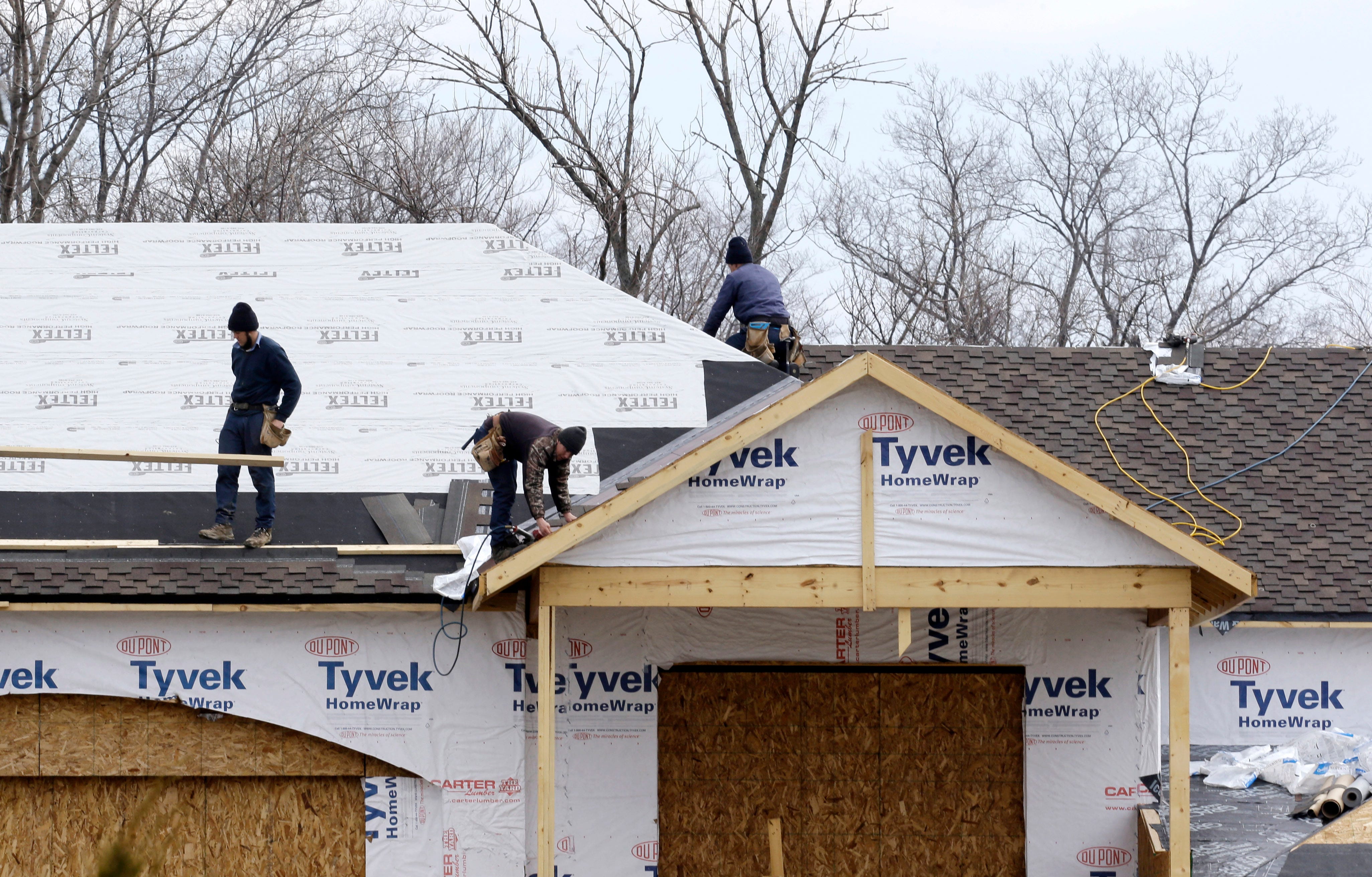New home construction down 17% in Michigan
 Breana Noble
Breana Noble
New construction permits continue to decline year over year, despite growing demand for housing, according to the Home Builders Association of Michigan.
Year to date in 2019, municipalities have issued 1,000 fewer construction permits in Michigan than in 2018, a 17% decline, according to the U.S. Census Bureau.
Although colder weather conditions from January through March have contributed to declines from the previous year, high costs related to regulations, labor and tariffs are contributing to “sticker shock" and shifting buyers to the existing home market, said Bob Filka, president of the Home Builders Association of Michigan.
"More and more people interested in new construction discover what some of those prices escalate to," Filka said. "Suddenly they're being pushed toward existing homes and so there's more competition for those homes, but their prices haven't risen as quickly as costs of new construction. As soon as that balances out, you'll see more new construction. It's going to take a while."
There have been 4,260 permits issued in Michigan this year with 1,687 granted in April, a 7.2% decrease from last year. Housing construction also fell nationally.
The trend holds true in Macomb, Oakland, St. Clair and Wayne counties, according to the Home Builders Association of Southeast Michigan. Just 1,173 permits have been issued in the region so far this year, less than in 2018, said Michael Stoskopf, the association's CEO.
April’s 431 single-family permits, however, surpassed the association’s forecast. The last comparable poor-weather winter during which the frozen ground was too cold for most construction was in 2015, Stoskopf said, and 2019 is outpacing it by 8%.
Still, construction remains behind demand, he said. Permitting fees and regulations account for 25% of the construction costs, the National Association Home Builders estimates. Tariffs have contributed to supply cost increases, and a deficit of workers in the skilled trades have contributed to higher labor costs.
“Only certain people can afford $400,000, $500,000, $600,000 on a new home,” Stoskopf said. “Real estate sales of existing homes are showing a lot more energy this year than last year. That shows there’s strength in the market, but it’s not translating into new home construction because of new home prices.”
The median statewide selling price for a newly constructed single-family home rose to more than $330,000 statewide, according to the Michigan State Housing Development Authority.
Instead, many are purchasing existing homes and investing significant amounts to remodel them. Homeowners spent nearly $7.8 billion to renovate nearly 857,000 homes in Michigan last year, up more than $1 billion from 2017.
But fewer people constructing homes increases demand on the existing stock, increasing prices. That has led to increases in the number of renters, according to a report released in April by the Michigan State Housing Development Authority, which also predicted a deficit of 150,000 housing units by 2040. A statewide poll in mid-April also found 34% of Michigan residents already believe their communities have too few housing options.
Communities now need to think about housing attraction like business attraction, Filka said. They need to develop partnerships with builders and developers to determine how to make the construction possible.
"That will require some changes at the local level for costs of the infrastructure and other types of reviews because time is money for developments, as well," Filka said. "I think the communities that are going to have an advantage in growing and attracting more people are going to be those that figure that out first."
bnoble@detroitnews.com